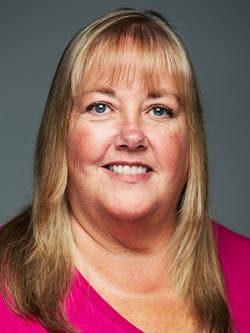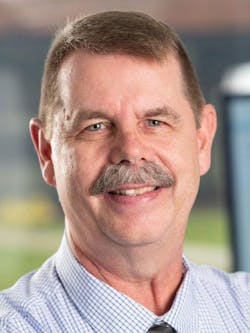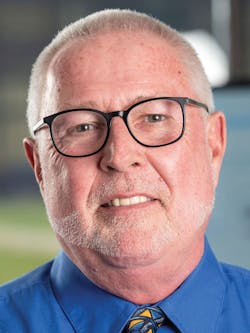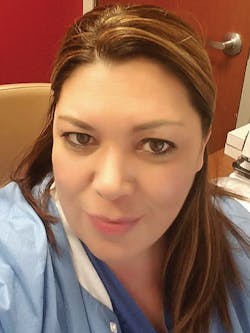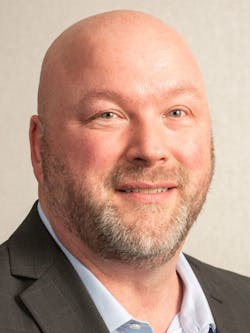IP + SPD: Why shouldn’t we mark the twain?
Whether the healthcare industry wants to admit it, regardless of likability or education and training, sterile processing is not about supply chain – although one could argue successfully it can be a service tethered to that department via the org chart.
Unfortunately, it’s also not even about the operating room – although it can be a grafted-in surgical service with a similar tether to that department via the org chart.
Sterile processing, above all else, technically concentrates on one thing – or maybe something like a coin with two similar sides – infection control and prevention.
And yet, of the three areas mentioned above, no two other than the last two remain the farthest apart. So what can and should be done to remedy that? And how much logical sense – realistically – does it make for healthcare organizations to solidify this bond through a dedicated department as posited as late as two years ago in “Infection Prevention’s C-Suite-spot?” Click here for the mind-tingling concept: https://www.hpnonline.com/sterile-processing/article/13001147/infection-preventions-csuite-spot.
In examining the professional relationships between Infection Preventionists and SPD and in exploring how to bring the two areas closer together for the benefit of clinical operations and overall patient care quality, experts admit and acknowledge the inherent value of the two working just short of symbiotically. But they also spy some of the needless challenges and hurdles complicating the journey.
Balancing the load
Infection prevention (IP) professionals simply are pulled in so many different directions that they can be overwhelmed with the task of infection prevention for an entire organization, which may include many departments and a plethora of off-site locations overseen within a system, according to Cheron Rojo, AA, CRCST, CIS, CER, CFER, CHL, Clinical Educator Coordinator, SPD, Healthmark Industries.
There is typically one IP to one hospital, but there has been a shift to have more IPs within an organization because of the high volume of managing data and attention needed for each department, Rojo observed. With such an expansive reach, IPs tend to “shy away from SPD” because IPs may not be as educated or understanding of SPD’s processes and practices, she added.
Rojo also alludes to time as an inherent challenge for IP that blocks progress between IP and SPD professionals working together. “The best way to start is scheduling an appointment with IP for a good amount of time to provide a tour of your department, educate the IP on the process of SPD, and allot time to sit down and discuss the issues you are faced with and how IP can help champion these issues,” Rojo advised. “Scheduling continuous meetings either monthly or quarterly to discuss the progress of the issues currently pending [resolution], remaining issues not started, or new issues that have arisen in the department can be effective in keeping to your goals with IP.”
Further, Rojo urges those facilities that provide SPD certification courses to invite IP pros to attend courses, familiarize themselves with chapters or even become certified themselves as they increase their education on the SPD area and its surrounding issues.
“Although there are many benefits from collaboration of infection preventionists and SPD professionals, often this relationship is never cultivated,” Pate told HPN. “Perhaps there is a general lack of understanding from both departments of how beneficial collaboration would be if it indeed did occur. Often, especially in large institutions, the IPs and the SPD professionals don’t even know each other or they may serve on a committee or team with each other but don’t have the opportunity to get to know each other on a personal or working relationship basis. The departments may be physically located in separate buildings or on the other side of the campus, hindering interactions between the two.”
Pate frequently lectures on behalf of Ruhof Corp. as an educator in the areas of sterile processing and infection prevention.
“It is easy to become focused on individual departments and it is often forgotten that if the synergistic approach is utilized, it would be beneficial to meet the overall goals of effective cleaning and sterilization of instruments and scopes for the institution,” she said.
Friction may exist between the two departments as well, observed Larry Slattery, Senior Consultant, Professional Services Group, STERIS Corp.
“Healthcare systems often view Infection Control and Sterile Processing as separate entities with different responsibilities,” Slattery continued. “We know that strong collaboration, coordination and communication will help drive performance. Training and education is key – for both departments. Staff will better understand the ‘big picture’ if they understand how different departments can impact the same outcome or goal.”
“Often, Infection Control is not entirely familiar with the actual processing steps of the instrumentation,” Slattery continued. “They are aware of the requirements of the process outcomes and conditions within the physical processing area. Demonstration of the processes and understanding the requirements of the staff helps [them] to better understand the bigger picture.”
“Infection Prevention and Sterile Processing don’t traditionally work together because they usually report under different departments,” Brewer noted. “IP is usually under Nursing or Quality, and SPD is almost always under Surgical Services. IP rarely gets involved in what SPD does for the hospital, with the exception of checking that their processes around validation are appropriate and ready for regulatory inspection.”
Brewer acknowledges that increased collaboration between departments in hospitals would allow for more partnerships between IP and SPD, but she encouraged IP to be partnering with every department in the hospital to ensure a safe environment and high quality of patient care.
Battling for priority
Cassell also believes a resource gap persists between nursing and support services in a hospital, which may play a key role. “I don’t necessarily think all SPDs are short-changed on resources due to being a support unit, but I do believe in many hospitals resources are more focused on nursing units with direct patient care,” she added.
At facilities where he has worked, IP may have access to generated reports that show sterilization loads, particularly failed loads and the pass/fail rate of sterilizer loads, but “unless there is an issue or a finding there is no further discussion,” he said.
Thurmond notices the difference and sees the value when IP and SPD actually do work together.
“I will say that if there is an issue or a surgical patient develops a [surgical site infection], IP is contacted, and we participate by tracking the trays used, and tracking the sterilization process of those trays to assure they were sterilized properly,” Thurmond said. “We have worked together with IP, OR and surgeons to track those cases and seek to identify commonalities [to determine] a root cause. We were an integral part of that effort. I truly feel a big part of [the] team when called upon.”
“The Infection Prevention function has such a broad mandate — preventing infections of all types across all environments within the healthcare facility or multiple facilities — that their attention is naturally divided,” Frieze told Healthcare Purchasing News. “On the other hand, the Sterile Processing department is a group of specialists immersed in a complex and dynamic system day in and day out. The difficulty is aligning priorities and the timing to come together and collaborate.
“Ideally, the departments would be aligned by a common reporting structure with aligned objectives and improvement projects,” Frieze continued. “From a practical standpoint, a reliable and sustainable first step is to establish a formal cadence of communication between the two departments. Such an open channel will provide two major benefits: It will serve as an early warning system for potential issues and it is an opportunity to identify intersecting initiatives where working together may save effort or enhance outcomes, helping both departments meet their goals.”
Playing matchmaker
In any kind of nascent relationship or budding partnership, who makes the first move can make a difference, particularly with two groups immersed in the science of biology, chemistry, microbiology, bacteriology and virology. Should IP approach SPD or vice versa? Opinions remain mixed.
“SPD should spark the relationship with IP professionals since the IP professionals tend to shy away from the SPD department and may continue to avoid the relationship,” insisted Healthmark’s Rojo. “You will find the IP professionals are very willing to learn about the SPD arena and not only build a relationship with the SPD professional but also continue to maintain it as well.”
Case Medical’s Frieze maintains an optimistically open mind.
“Yes, yes, and yes some more,” Frieze responded to the key question of approach. “SPD should approach Infection Prevention. Infection Prevention should approach SPD. And any and all healthcare executives should approach both departments the value of cross-function collaboration at the leadership support that they will be happy to provide. Leadership support is critical to any long-term initiative to help sustain and protect the time allocated for these activities.”
Much depends on communication, according to Tru-D’s Brewer who feels almost equally as sanguine.
“Hospitals vary on communication styles between sterile professing and infection prevention. The bottom line is that a two-way relationship is critical for success. In addition, the environmental services team should always feel valued,” she noted.
Robert Wood Johnson University Hospital’s Cassell encourages SPD to break the ice right away.
“Speaking for myself, I think if you do not have the connection already in your SPD it is important to reach out and connect,” she said. “Sometimes it may be viewed as you didn’t need help or support if you never brought it up or reached out. And again, people don’t know what they don’t know, so Infection Prevention may have never thought they were needed in your area. Now that SPD is more in the forefront of things with [The Joint Commission] and CMS it is finally being looked at by Infection Preventionists as a vital department.”
STERIS’ Gruhlke recommends any proposed partnership between the two areas should originate from the SPD leadership.
“IP has so many responsibilities throughout the hospital that they could easily overlook SPD,” he said. “Also, developing the relationship will be beneficial to both areas in that when developing new policy and procedures, having everyone on board will only help in ensuring any required regulatory standards from both SPD and IP agencies are included.”
Extending hands need not be mutually exclusive, according to STERIS’ Slattery.
“Sterile Processing need not wait for others to make the first move toward reconciliation,” he advised. “Nor should Infection Control. But things will move forward more quickly if someone takes that first step. So, regardless of the group you are in, make that first step. Infection Control and Sterile Processing are much stronger and more effective when allied than when contrary.”
The Christ Hospital’s Thurmond likens this issue to a scenario that may be familiar with some.
“The situation feels like the shy boy and the shy girl at a school dance,” he observed. “Neither wants to make the first move, but when it happens, there is so much more to explore. It could be initiated by either party. I have invited our IP group to come and visit and spend a day or half of a day with us. They were more than willing, and it was an eye-opening experience for them. Although they interact with the whole facility, they refer to Sterile Processing as the professionals in sterilization and high-level disinfection and have relied upon us to help build processes and train departments who handle instrumentation.
“We have worked together to build policies and practices for clinics, floors and other areas of need,” Thurmond continued. “While demonstrating the process of receiving, cleaning, inspecting and prepping a robotic instrument, they were amazed that our technicians knew each step and could explain the process and what to look for as possible patient safety issues. So, likewise, we have to be open to having an outsider coming into our department and offering suggestions based upon their knowledge. Another set of eyes is never a bad thing and can often give suggestions or areas of improvement.”
UAB’s Pate approaches it from the other side. “Infection Prevention should initiate a working relationship/partnership with SPD,” she insisted. “The SPD professionals may not feel comfortable with initiating this relationship. Some of the Infection Preventionists may be viewed as upper-level management, and there may not be a comfort level with the SPD professionals to take on the responsibility for this relationship. It may be difficult to schedule a meeting, or they may not even know with whom to schedule the meeting. Compliance with infection prevention regulatory standards falls under the responsibility of the Infection Prevention department. The department should make an opportunity to collaborate with SPD. As they work together, setting goals and developing/implementing processes that will meet the standards, ultimately patient safety is increased.”
Sharing the wealth
One of the benefits of an active, working partnership is that each side educates and learns from the other. SPD learns from IP; IP learns from SPD. From that mutual sharing, patient care quality theoretically should increase.
Specifically, how and what does either grow?
“SPD professionals can benefit from IP professionals’ expertise in numerous areas of SPD,” said Healthmark’s Rojo. “One of them is soiled and clean transport where the IP professional can help with compliance of the end-user for pre-treatment of soiled instrumentation in the surgical department, in-house clinic and off-site clinics and nursing floors. IP professionals can benefit from the SPD expertise in the areas of sterilization, sterile storage and endoscopy processes if applicable in your SPD department.”
Case Medical’s Frieze concurs.
“The staff in SPD has experience with the hands-on processes critical to effective instrument reprocessing,” she noted. “They also observe challenges with new employee training, process steps where staff are more prone to errors, workflow bottlenecks and inefficiencies, and so much more. They can be a source of quality control and risk identification to collaborate with the Infection Prevention group to source new equipment, redesign a workflow, or standardize a process to remove the opportunity for human error.
“The specialized technical and scientific knowledge of the Infection Preventionist and their position within the organization allows them to approach challenge with a view to the systems operating within a facility,” Frieze continued. “Working across departments and environments allows best practices in one area to be replicated in other areas. A five-minute standup meeting at the beginning of each shift or a creative problem-solving approach can be transferred to multiple teams when you have a ‘connecter’ keeping their finger on the pulse of the organization.”
Tru-D’s Brewer assigns SPD an important role that befits their responsibilities of cleaning, prepping, processing, storing and issuing medical/surgical supplies and equipment for patient care in patient rooms and operating rooms and can gain much knowledge from infection preventionists for enhanced strategies.
“Sterile processing is the first link in the infection prevention chain,” she said. “Improperly or inadequately cleaned, disinfected and sterilized instruments can introduce pathogens into the operating room, increasing the risk of a patient getting a surgical-site infection (SSI).”
United front, voice
Robert Wood Johnson University’s Cassell sees value in SPD and IP collaborating for a common cause.
“SPD can benefit from having the backing of Infection Preventionists when it comes to push back from the operating room or other units that may be wanting you to do something that you know is not quite right but keeps pushing back,” she noted. “They can help with the regulatory aspect of processes and communicating that to surgeons and other hospital staff that also do not have knowledge of SPD’s vital role.”
That’s why it’s critical for SPD to build a relationship with IP so that either sees the other as experts in their areas. “Once the relationship is established they may now reach out to you for questions regarding surgical patients who have presented with an infection to discuss if loaner trays were used or any [immediate-use steam sterilization] on that particular case,” Cassell continued. “They may even reach out when they are on the nursing units to get your expertise on storage of instruments or peel packs. Infection Preventionists can help be the voice you need if you feel no one is listening.”
Cassell believes that managers and directors in all facilities should be raising awareness by holding educational forums, attending meetings and committees – especially Infection Prevention committee meetings, doing quality abstracts and newsletters and reporting out at monthly operating room committee meetings.
SPD and IP could collaborate in a number of key areas, according to The Christ Hospital’s Thurmond, including policy writing, capital equipment planning, workflow design and an overall understanding of the effects their interactions have on patient safety.
STERIS’ Gruhlke agrees with Thurmond, citing cooperation with policy and procedure writing, communication with senior leaders when required regulatory agencies mandate manufacturers’ IFUs as well as SPD familiarity and compliance with the IFUs. STERIS’ Slattery cites a “shared knowledge of patient safety requirements throughout the surgical patient’s hospital cycle” as one benefit. “Infection Control can benefit from understanding the actual processes required to return used surgical instruments to surgical-ready condition,” he added.
UAB’s Pate stresses that when IP and SPD collaborate, head knowledge translates to hands-on experiences.
“The Infection Preventionists have an extreme amount of knowledge related to bacteria, the chain of infection, ways to prevent the spread of infection and regulatory standards,” she said. “Although they have this immense amount of knowledge, they may not have the personal ‘hands-on’ work experience and knowledge of the SPD processes of cleaning, disinfection and sterilization. Working with SPD, they could actually see how processing is done and be able to quickly identify how their expertise could be beneficial to the department.”
But that’s not all as the relationship broadens and deepens.
“In the last several years, regulatory agencies have trained their professionals in topics related to infection prevention, therefore, standard compliance is monitored much closer,” Pate continued. “With outbreaks of infections and the spread of pathogens through cross contamination, hospitals and healthcare organizations have an increased awareness of the urgency for standard compliance. The SPD professionals could significantly increase their knowledge of the ‘why’ it is so important to follow the guidelines and standards, and the potential adverse outcomes if they are not followed. The Infection Preventionists could provide expertise and support to the SPD.
“The SPD professionals have excessive knowledge [involving] the processes and standards related to cleaning, disinfection and sterilization,” Pate said. “Their knowledge and expertise in pre-cleaning and cleaning instruments is invaluable. SPD professionals are highly trained and may be certified in their jobs, and have extreme knowledge regarding recordkeeping and technical information with the equipment. They are familiar with new products and processes related to cleaning, disinfection, and sterilization.”
Essentially, when each shares their expertise with the other, process effectiveness and compliance increases, according to Pate.
How and why SPD, IP
can work so well together
Janet Pate, JD, MHA, R.N., Director, Environment of Care, Infection Prevention, University of Alabama Health Services Foundation, knows and understands the synergy between Infection Prevention and Sterile Processing.
She’s experienced it.
During the first 12 years of her employment when she served as Director of Employee Health, Safety, and Infection Prevention, SPD reported to the OR Director even as Pate developed a very close relationship with the SPD employees, she recalled.
“They were extremely knowledgeable and willing to work collaboratively with me,” she said. “They also respected me and my position and what I could do, in turn, for them.
“In 2008, the decision was made by our facility to close the operating room and move it to the outpatient department at the hospital,” Pate continued. “The ambulatory facility was so large that it was necessary to keep the SPD in the facility. My relationship with the SPD employees had grown so close that they went to administration and voiced that they wanted to report to me. I considered that an honor. The department was given to me, and I became their director. It was decided by my facility that there was no need to change my title [and] that it would fall under Infection Prevention.
“A few years later, with the changes in The Joint Commission standards and chapter titles, my title was changed to the Director of Employee Health and Environment of Care, which would encompass all of the responsibilities. Almost 10 years later, the departments and responsibilities became so large that the decision was made to combine some of my responsibilities with the hospital and assign a director for each service. I chose to keep the Environment of Care and Infection Prevention departments. Last summer, we combined the hospital Infection Prevention department with the ambulatory department. I chose to keep the Environment of Care and Safety responsibilities. I remain at the organization and I am still very involved with the IP functions because IP and EOC are so tightly woven.”
Pate continues to value her professional relationship with SPD.
“The opportunity to work with SPD and IP allowed me to learn so much about the regulatory standards related to both departments and enabled me to lead the departments to meet the standards,” she said. “During my responsibilities at that time, we received no IP or SPD recommendations from TJC or CMS when we were surveyed, and the SPD department was highly praised by the surveyors. I could give you several positive examples from this experience. Many times I don’t think the leaders of IP and SPD really understand how valuable this relationship can be.”
Can IP, SPD work together? Yes, they can
Healthcare Purchasing News asked Infection Prevention and Sterile Processing experts to share examples of professional working relationships that were successful.
“I have had numerous successful collaborative relationships with IP professionals in my career and have continued relationships with them still. There have been a lot of success stories with IP professionals as SPD champions.
“One that stands out is an SPD department given an additional opportunity [to handle] patient care equipment. At the time there were only 3 FTEs, and those FTEs had to clean, disinfect, and distribute patient care equipment to the whole facility, a 300-bed children’s hospital in California.
“We knew that the IFUs (Instructions-For-Use) were not being followed or updated, some patient care equipment was outdated and needed to be replaced, and there were not enough FTEs to meet the demand of requests and turnarounds. This was a daunting task that the SPD leadership could not take on by themselves.
“We reached out to our IP professionals at our facility, scheduled tours and meetings and developed a task force. IP helped with IFUs that were vague and collaborated on best practice and helped replace outdated equipment and expand the equipment inventory, finding the funds to do so, as well as justifying [the need] for additional FTEs to meet demand.
“I would like to recognize Melinda C. Kerns, R.N., CIC, CPN, Infection Preventionist, Integris Baptist Medical Center, for championing the above story, her dedication to patient safety and her ongoing support to the SPD professionals.”
Cheron M Rojo, AA, CRCST, CIS, CER, CFER, CHL, Clinical Educator Coordinator, SPD, Healthmark Industries
“In one hospital that was affiliated with a number of satellite surgery centers, the SPD manager discovered inconsistencies about how satellite locations were processing certain surgical items. The SPD manager engaged the Infection Control leader to collaborate on an assessment, understand current practices and design a program to ensure consistent care and handling of reprocessed items. Together the team implemented changes, including additional training for staff and centralizing certain responsibilities, bringing all reprocessing into alignment with IFUs, system policies and best practices.”
Marcia Frieze, Case Medical
“Melissa G. Morgan, R.N., CIC, CSPDT, FAPIC, Senior System-wide Director for Infection Prevention & Sterile Processing for Moses H. Cone Health, was aware of gaps in terminal cleaning for the Sterile Processing Department. She presented a business case to executive leadership who approved the funds following a successful pilot.
Moses H. Cone purchased Tru-D following the trial and currently uses the device in Sterile Processing, ensuring one of the most contaminated areas of the hospital is as clean and germ-free as possible.”
Alice Brewer, Tru-D
“I have a great relationship with our infection prevention team and it has definitely benefitted both sides. I remember when I was trying to push for moving to take apart kerrisons due to the difficulty in cleaning and could not get the final okay to move forward. A few months went by and I still could not get the surgeons to give final approval, so I reached out to our Infection Prevention team and explained the situation and showed pictures. They set up a meeting within a week and got it approved to move forward by discussing it from an infection standpoint. I could have taken offense to the fact that they didn’t listen to me when I first stated it, but I realized that I did not have the same kind of relationship with the surgeons that the Infection Prevention team had. The end result was that we got to change out the kerrisons, which made it safer for our patients because they are easier to clean.
Another time I was asked to sterilize something that was a strange request and did not have supporting IFU. I informed the surgeon who did not understand why I could not do it and insisted on needing it. I reached out to our Infection Prevention team that explained it further to the surgeon as well as gave an alternative method on what could be done so I felt this was a win-win situation for all involved.”
Anita Cassell, Robert Wood Johnson University Hospital
“When we had our Infection Preventionists come to visit, we toured the whole department. There were questions about some structural designs in our decontamination room. It was identified that we had an inside wall that had gotten moist from our cart washer. It was starting to develop a mold. Together, we triggered the alarm to have the situation addressed immediately, and we replaced the wall and eliminated the chance for moisture to get there again. If not for the pull of the Infection Preventionists, it could have been a much longer process.
“We reached out to facilities that brought in a team to do air studies, and walled off the area, and started the demo of the wall. Basically, it was identified as an emergency and it was addressed immediately. We have a great relationship with our IP team, and we feel the mutual respect. We feel they are more of a partner, and the partnership is mutually respected.”
Tony Thurmond, The Christ Hospital
“As the Director of Infection Prevention in a large ambulatory facility, I quickly became aware that it was imperative that I develop a personal and working relationship with the SPD professionals. I was able to learn the challenges the department faced on a daily basis and learn the meticulous recordkeeping processes required for SPD. The SPD professionals were able to show me how they performed their job, and I was able to explain how important the way they performed was to our patients. After working together closely for 12 years, I ultimately became the Director of SPD, as well as the Director of Infection Prevention. The relationship became stronger, and a strong team was evident. If SPD was asked to perform cleaning, disinfection or sterilization that didn’t meet standards, it was reported immediately to me, and I was able to go to the source and educate them on the proper guidelines. This prevented SPD from having to spend their valuable time on addressing these issues, and I was able to ensure the regulations were followed. I also had the authority to implement any needed measures. I have personally been able to see the benefits from a collaborative working relationship between SPD and Infection Prevention.”
Janet Pate, University of Alabama Health Services Foundation
“Tray turnaround time from the OR perspective. Many times when a tray may be needed for various reasons – not enough inventory, planning not completed due to scheduling conflicts and so on – the expectation from the OR seems to be that SPD can receive the trays and completely reprocess [them] in a time frame that cannot be achieved. With the help from Infection Prevention, we were able to meet and present the facts using the instrument manufacturers’ Instructions for Use (IFUs) along with other regulatory agency recommendations, AAMI and AORN. When presented, OR leadership had a much better understanding and [updated] expectations for the actual time using required standards to reprocess trays.”
Ed Gruhlke, Senior Professional Consultant, Professional Services Group, STERIS Corp.
“While working with a large teaching hospital on a two-year Process Improvement Project it became immediately evident that there was discord between the ORs, Sterile Processing and Infection Control. In order to generate a successful outcome it was imperative that the three groups be aligned in their goals. During an initial meeting with leadership from all three areas I stated that the foundation for success required a minimum of three strong pillars. Those were Infection Control, Sterile Processing and the ORs. The common primary goal, first and foremost, is patient safety. All of the leadership in the room agreed immediately; they shared that same primary goal of patient safety. Once we could agree on that, conversation turned and continued on how the different groups could support one another.
“This meeting, early in the Process Improvement effort, was a key moment in the ultimate success of the project as a whole. [Here] is an excerpt from a recent communication with the Infection Control Manager at the example hospital: ‘I can tell you that Larry was a miracle worker while he was here, and even better, his changes have been maintained.’”
Larry Slattery, Senior Consultant, Professional Services Group, STERIS Corp.
About the Author
Rick Dana Barlow
Senior Editor
Rick Dana Barlow is Senior Editor for Healthcare Purchasing News, an Endeavor Business Media publication. He can be reached at [email protected].

